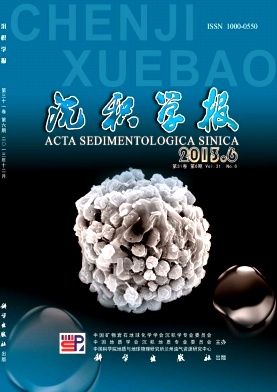Research and Discussion: an Approach to Quantitative A/S in High-Resolution Sequence Stratigraphy
- Publish Date: 2013-12-10
-
Key words:
- High-resolution sequence stratigraphy /
- litho-facies features /
- A/S interval quantization principle /
- base-level cycle division /
- braided-river sediment
Abstract: As a key parameter in high-resolution sequence stratigraphy, the ratio of accommodation to sediment supply, named A/S for short, has been used to divide stratigrahpic base-level cycles. However, A/S has been classified into unity, increasing, decreasing and below zero, without any real data. According to the record of litho-facies and its thickness responded to the variation of A/S, this paper proposes an approach, named A/S interval quantization principle within special interval, to quantify the real data of A/S. Based on the former research, we found real sedimentary model, and set number on each litho-facies within the model (from bottom to top, ZYXWDCBA, 12345678, respectively). According the numbers' changing, they are classified two intervals, base-level rising (number bigger upward) and base-level falling (number smaller upward). In each interval, we define the ratio, number of sediment litho-face to number of bottom sediment litho-face, as A/S data, and every A/S data of litho-face is the same. The A/S data and its vertical changing has the same meanings with which in high-resolution sequence stratigraphy. Applying the approach, we quantify A/S data on classic braided-river sedimentary litho-faces. With two practices, we found the A/S data on the former research, and based on which to classify short-term base-level cycle. Comparing with the former research, the division of base-level based on the approach has ideal similarity. At the same time, the division is single and operation-simple, which can avoid the phenomenon that different base-level division in the same sediment.
| Citation: | Research and Discussion: an Approach to Quantitative A/S in High-Resolution Sequence Stratigraphy[J]. Acta Sedimentologica Sinica, 2013, 31(6): 1088-1093. |






 DownLoad:
DownLoad: